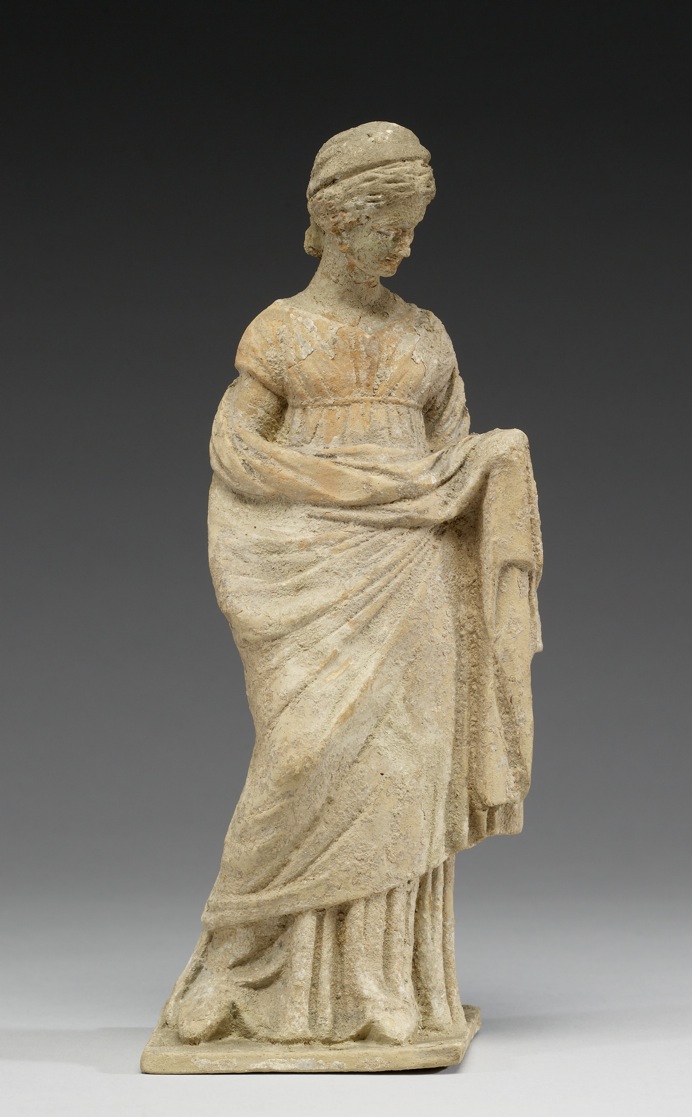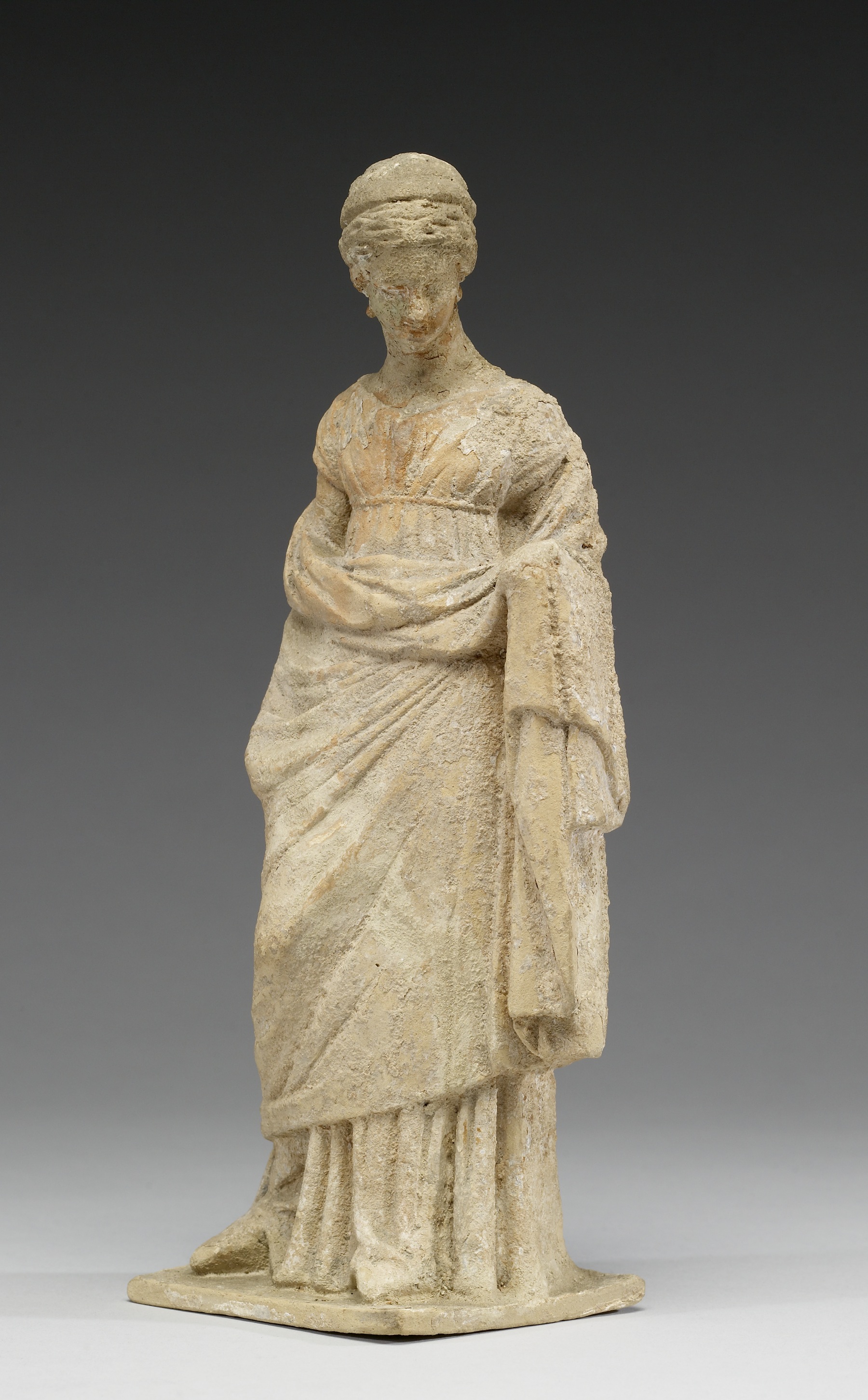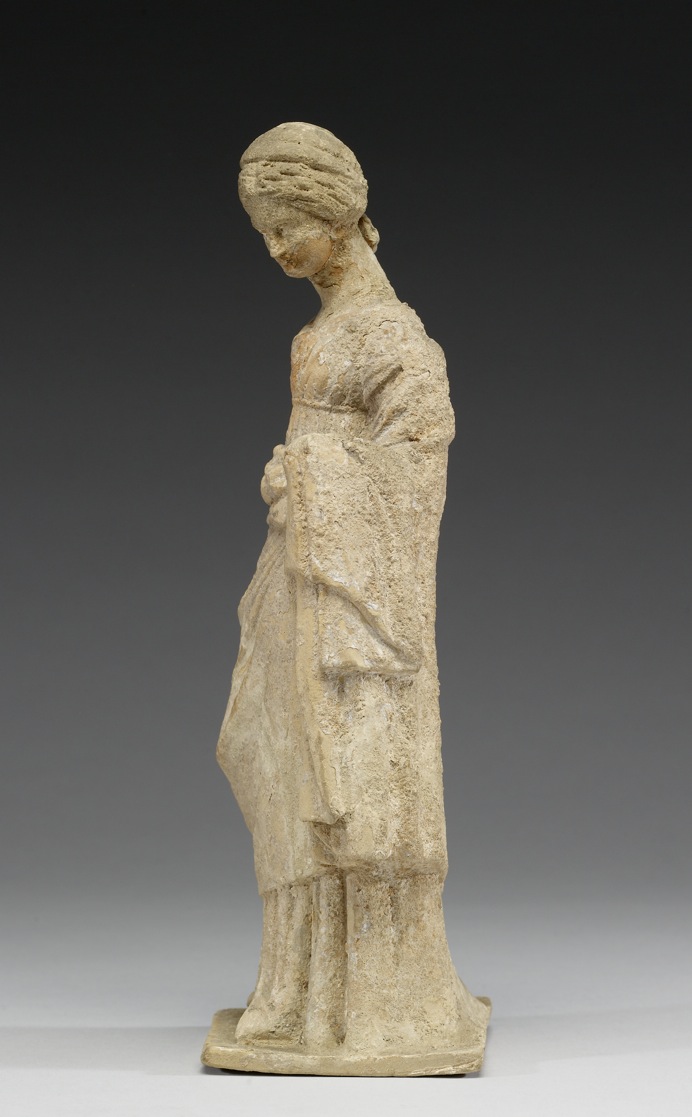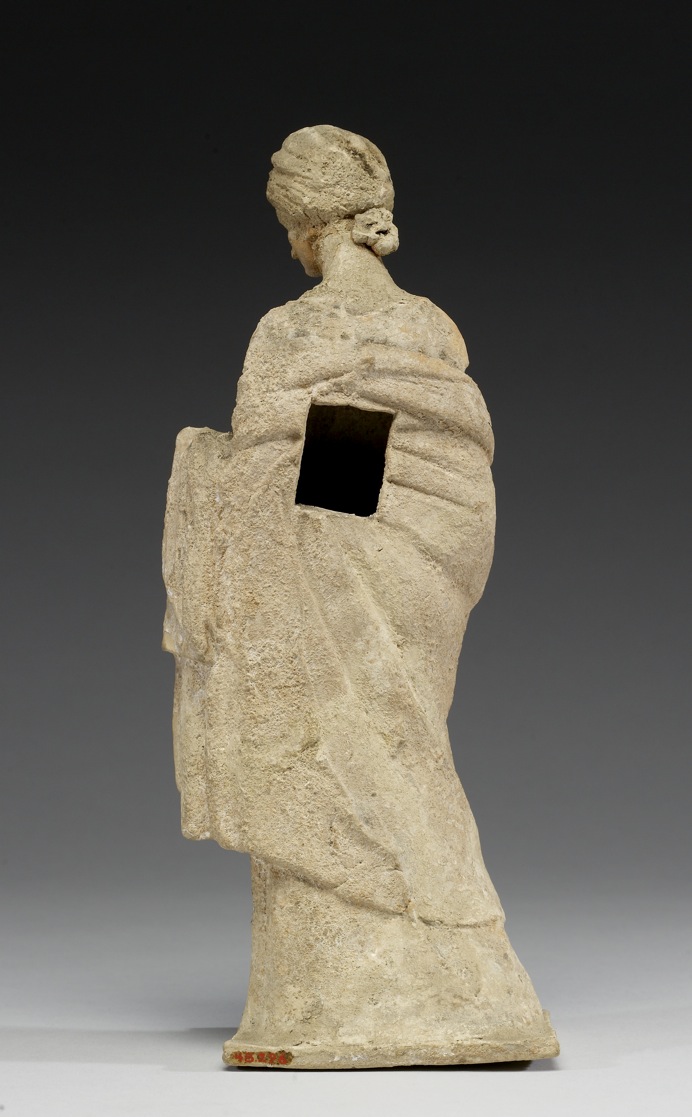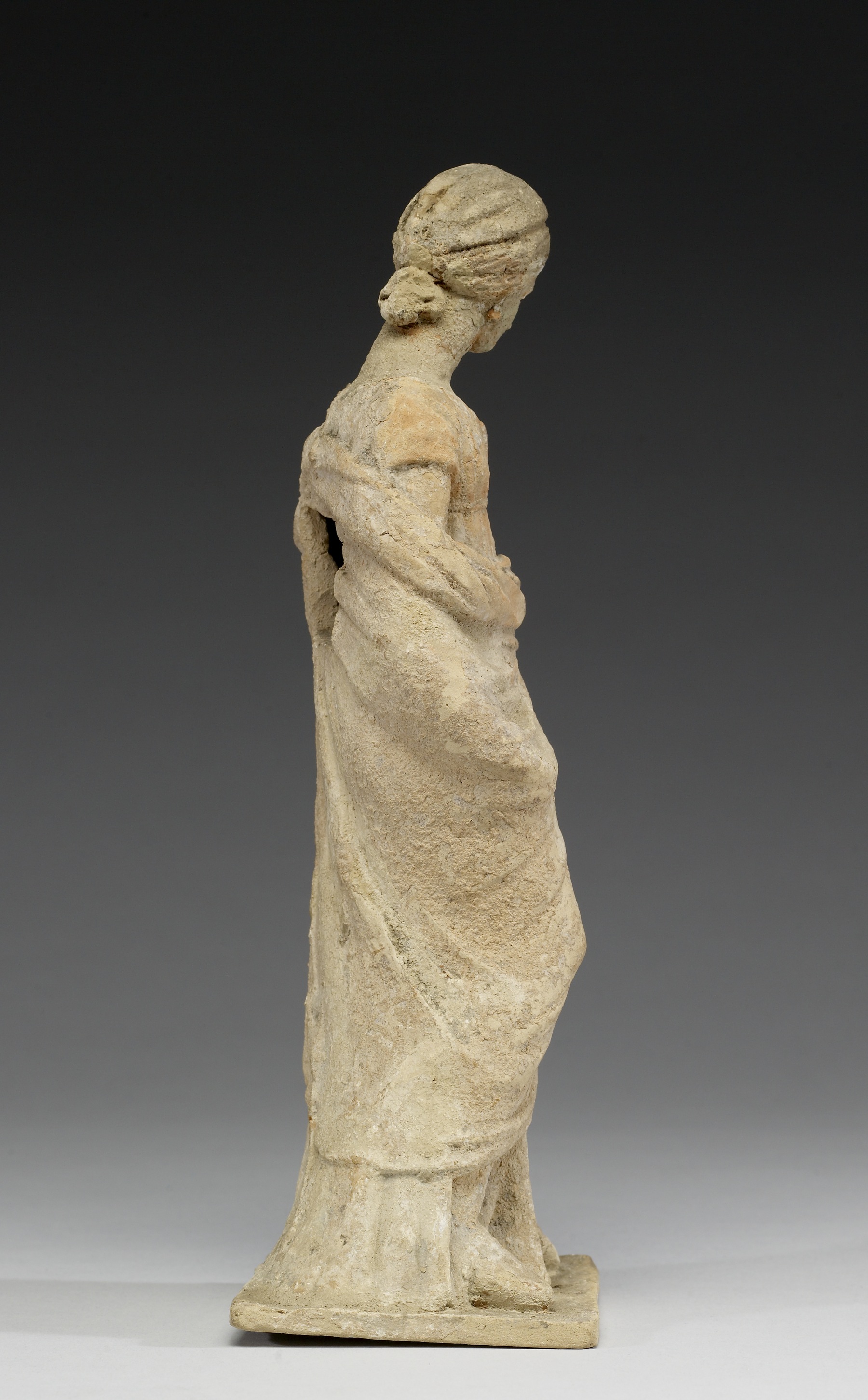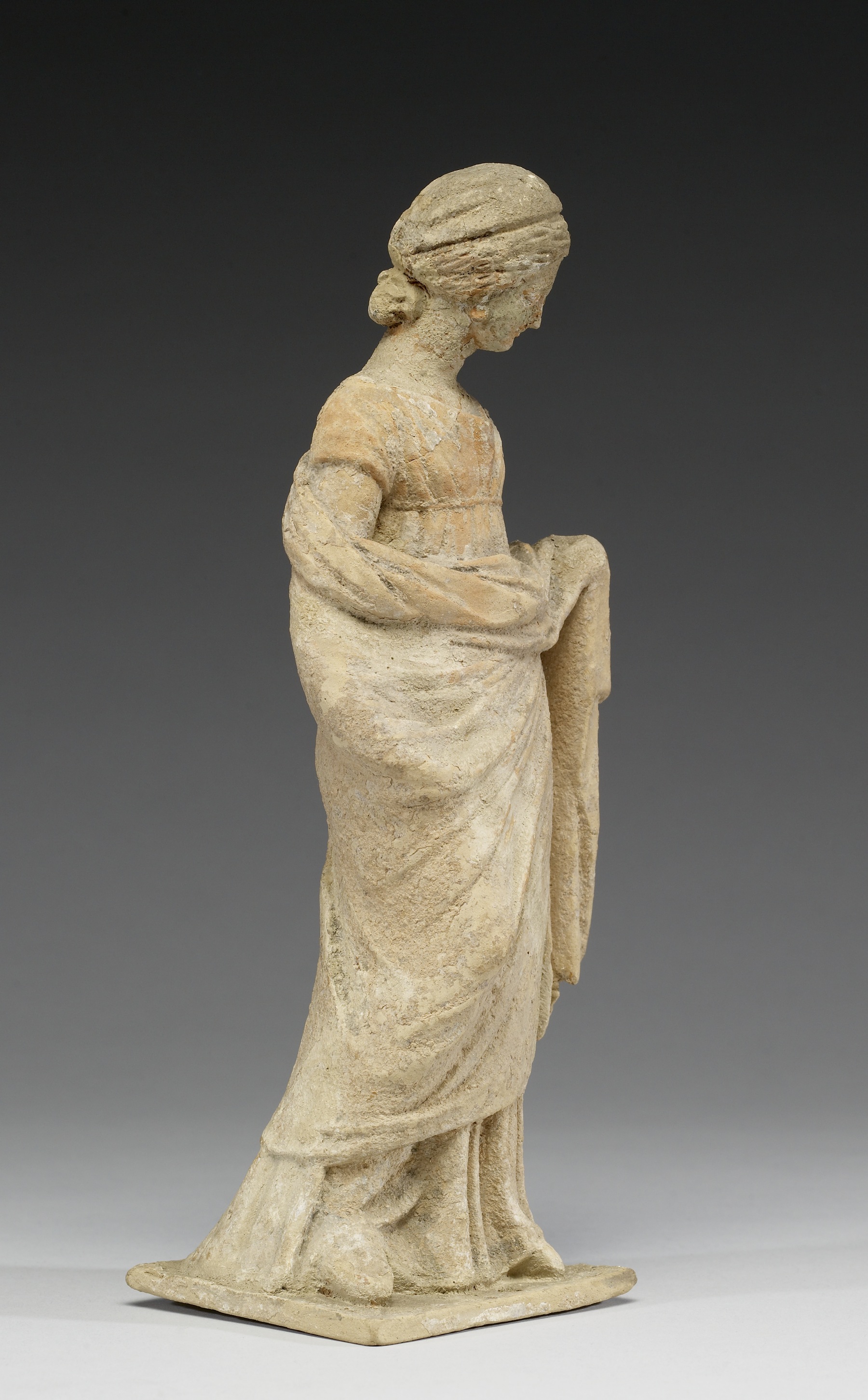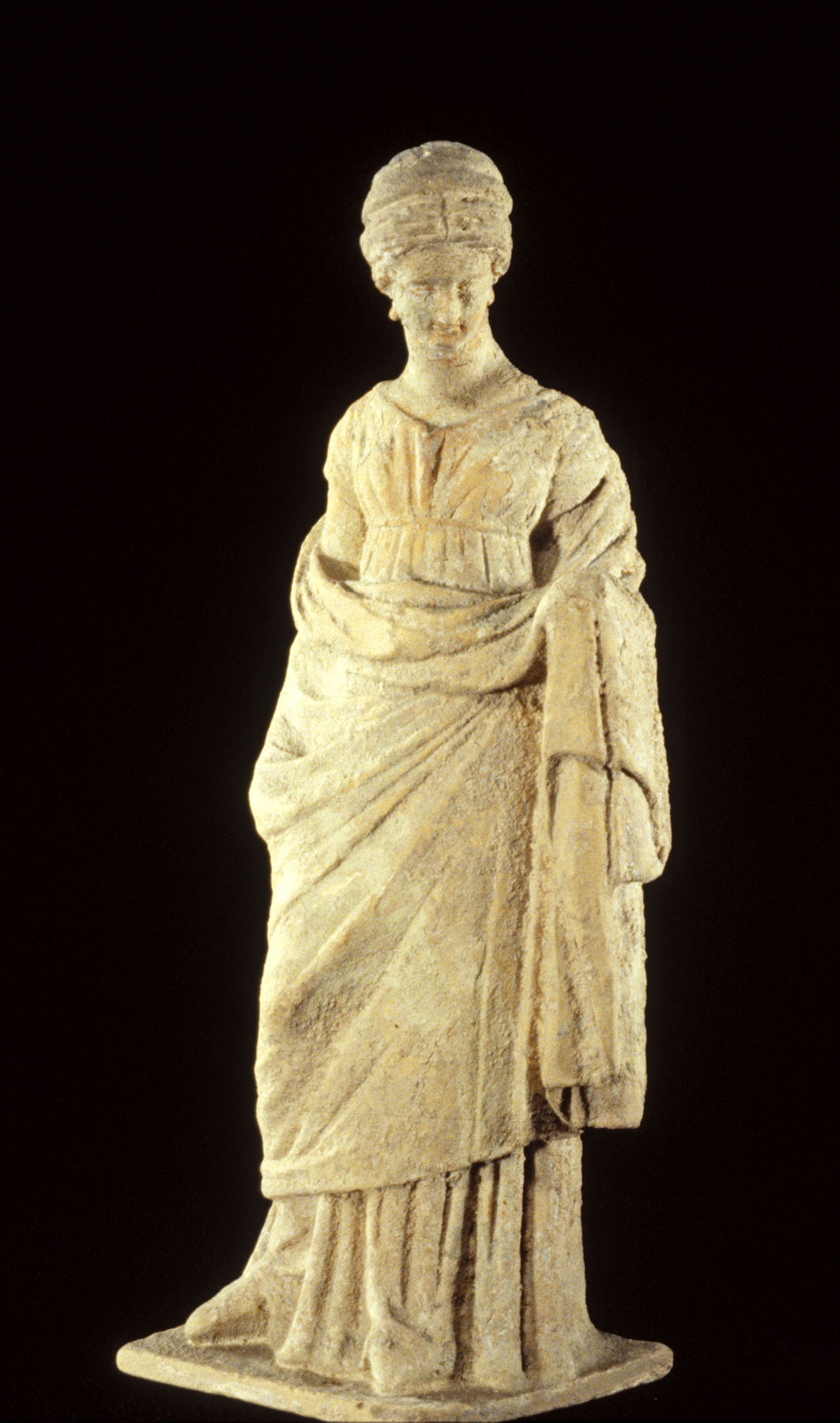Standing Maiden Wearing Kerchief
(Ancient Greece )
Looking down and to her left, this young woman stands with her weight on her left leg. She wears a kerchief on her head. Her mantle is loosely draped around her lower body, covering both arms and leaving her short-sleeved undergarment exposed on her upper body and near her feet. While the statuette is modeled in the round, the drapery is more schematic and flatter on the back. This piece has a square vent hole at the center back.
Although generally referred to as Tanagra figurines after the most famous findspot, Tanagra (modern Schimatari) in Boeotia, Greece, statuettes of this type have been found at other sites in the ancient world, including Myrina and Smyrna (modern Izmir) in Asia Minor. The most common forms of the statuettes depict young women sitting, standing, or in the process of graceful movement, but there are also examples showing men or children. The statuettes were used as grave offerings, votives, decorative objects, and perhaps toys. The hair, clothing, skin, and jewelry of the pieces were originally painted, although most of the colors are presently faded.
Provenance
Provenance (from the French provenir, 'to come from/forth') is the chronology of the ownership, custody, or location of a historical object. Learn more about provenance at the Walters.
Joseph Brummer, 1925 [mode of acquisition unknown]; Henry Walters, Baltimore, 1925, by purchase; Walters Art Museum, 1931, by bequest.
Exhibitions
| 1988-1989 | From Alexander to Cleopatra: Greek Art of the Hellenistic Age. The Walters Art Gallery, Baltimore. |
Geographies
Greece or Turkey, Eastern Mediterranean (Place of Origin)
Measurements
9 13/16 x 3 9/16 x 3 1/16 in. (25 x 9 x 7.8 cm)
Credit Line
Acquired by Henry Walters, 1925
Location in Museum
Accession Number
In libraries, galleries, museums, and archives, an accession number is a unique identifier assigned to each object in the collection.
In libraries, galleries, museums, and archives, an accession number is a unique identifier assigned to each object in the collection.
48.296

